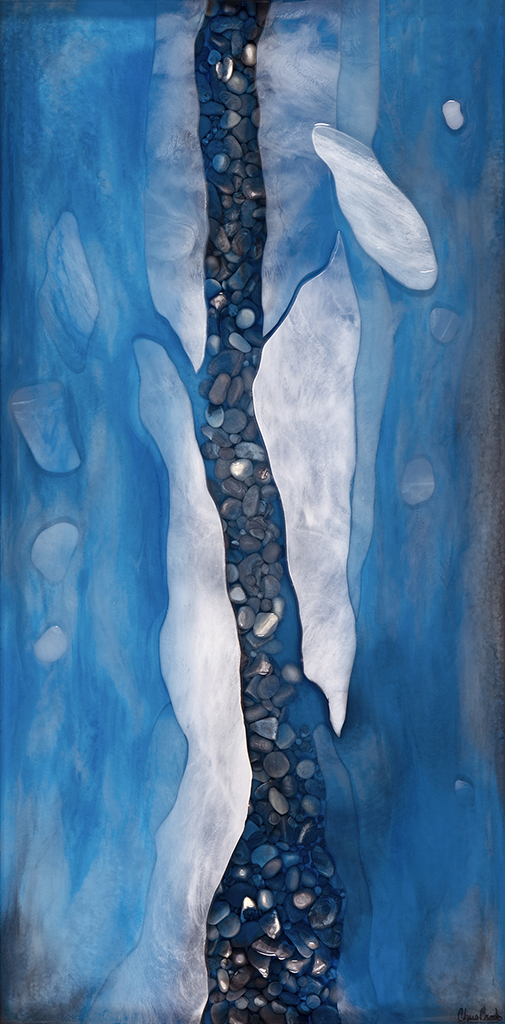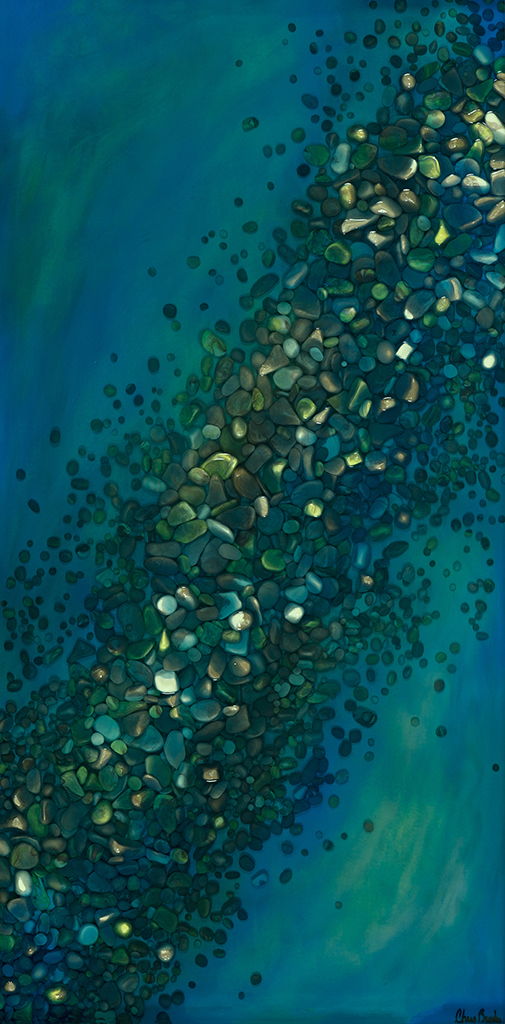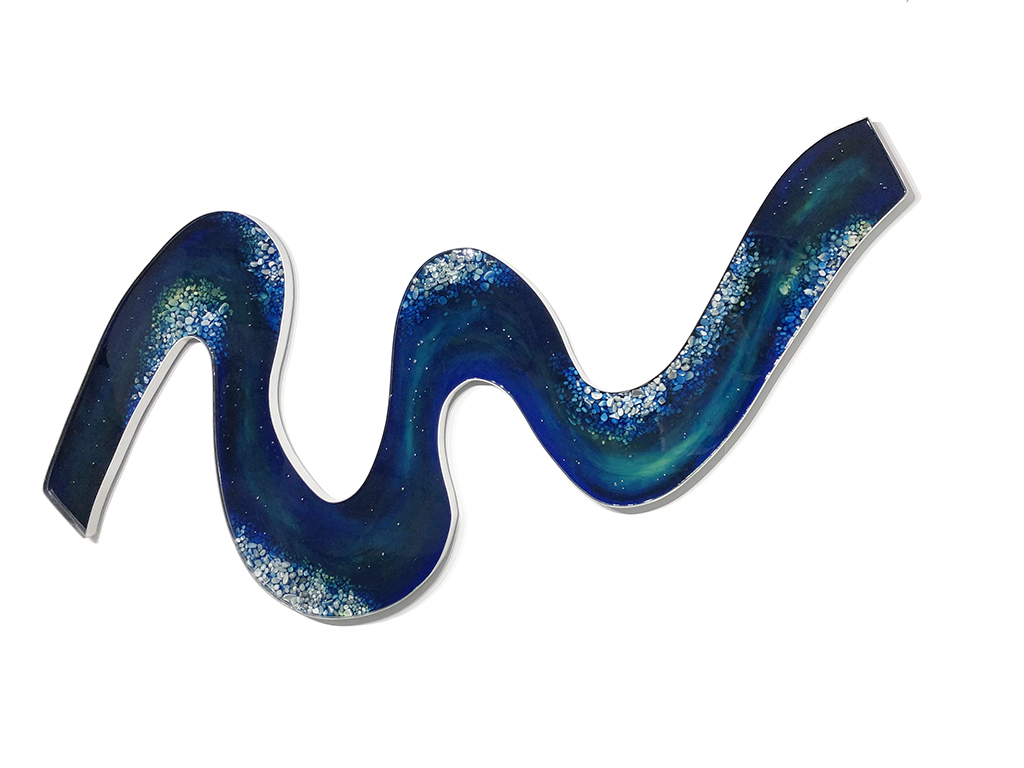Chris Brooks
AOCAD, ASA
Biography
Chris Brooks’ work finds its foundation in an exploration of materials and process to create one of a kind landscape sculpture.
Brooks built his skills and understanding of contemporary art at the Ontario College of Art and Design graduating in 2004. He found work as a moldmakers assistant in an industrial setting before choosing to move west to Calgary.
Captivated by the rivers that carve their way through Alberta, he began experimenting with different resins for their ability to retain fluid features in a solid state. Sculptural in the way that handmade river elements (rocks and ice) are embedded, the works retain a distinct painterly quality with the tinted layers of resin designed to add movement and depth.
Artist Statement
You are hours into a hike when you reach the river’s edge, and then seeing the water isn’t enough. Your nostrils flare as you inhale the cool cleansing aroma. You’re overcome with an urge to feel it. Off come the hiking boots. Socks strewn on the shoreline as you hop across the uneven rocks trying to get your pants rolled up to your knees. You pause at the shoreline, testing its qualities with your toes. With minor hesitation, you wade deeper, embracing its restorative briskness. It rushes against your calves and soothes your aching feet. Its temperature seems to rise matching yours. The intention of these riverscapes is to ignite our tactile desire to connect with water. Inspiring a consideration of the reciprocal commitment we have with water.
Developing this collection, fine resin proved to be the ideal medium. Having the unique ability of maintaining fluid qualities as a solid. Each rock is hand-cast in resin and finished before positioning it in the composition. The ice is cast in sheets, cut to shape and imbedded in the layers. Each piece consists of three to five layers. Each layer consisting of four to six unique tints of resin. Manipulating these tints creates depth and movement that becomes stationary as it solidifies. The viewers movement animates the art as the way light absorbs and refractions evolve. This is reminiscent of the fleeting natural experiences that are often a short distance away.





